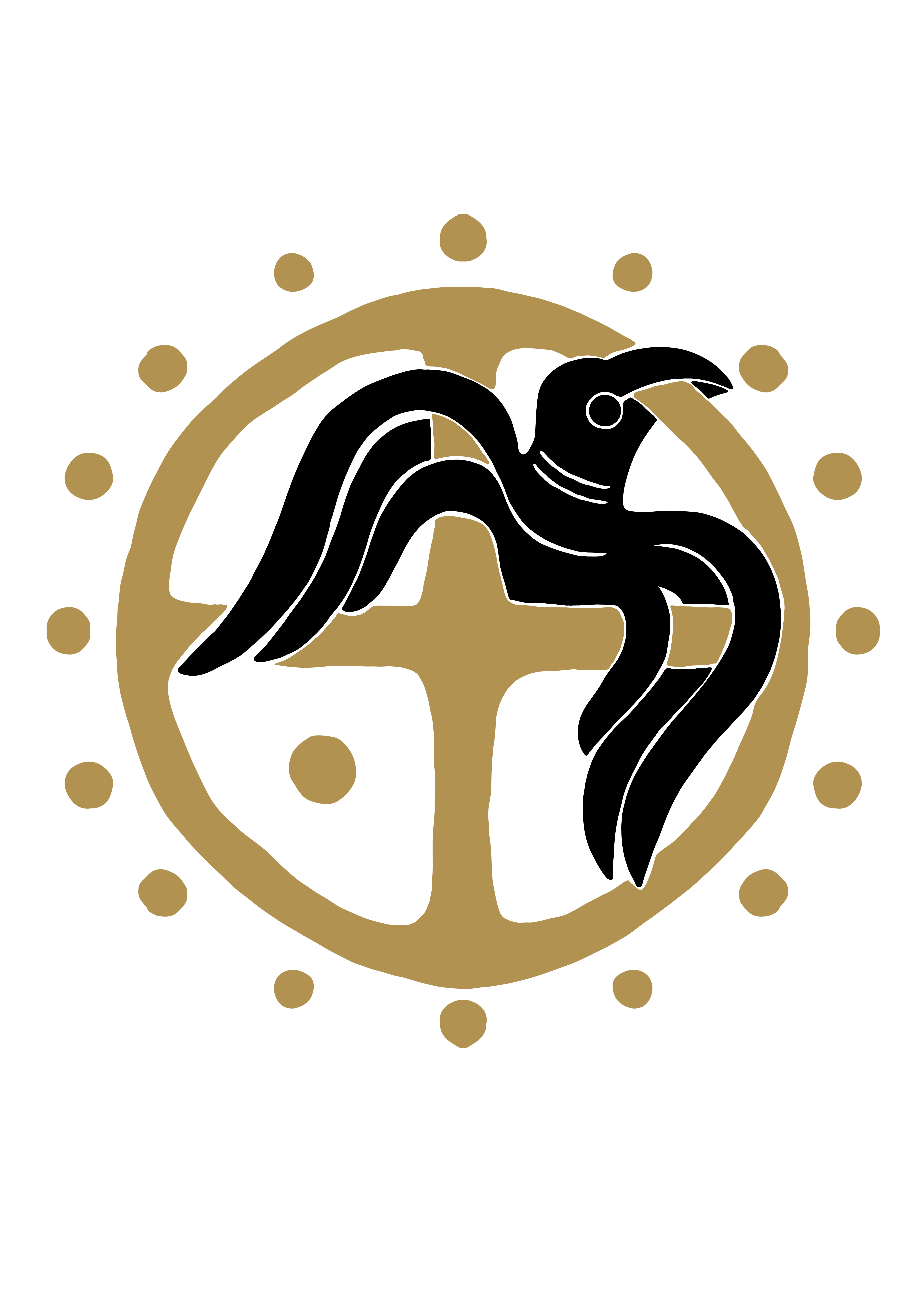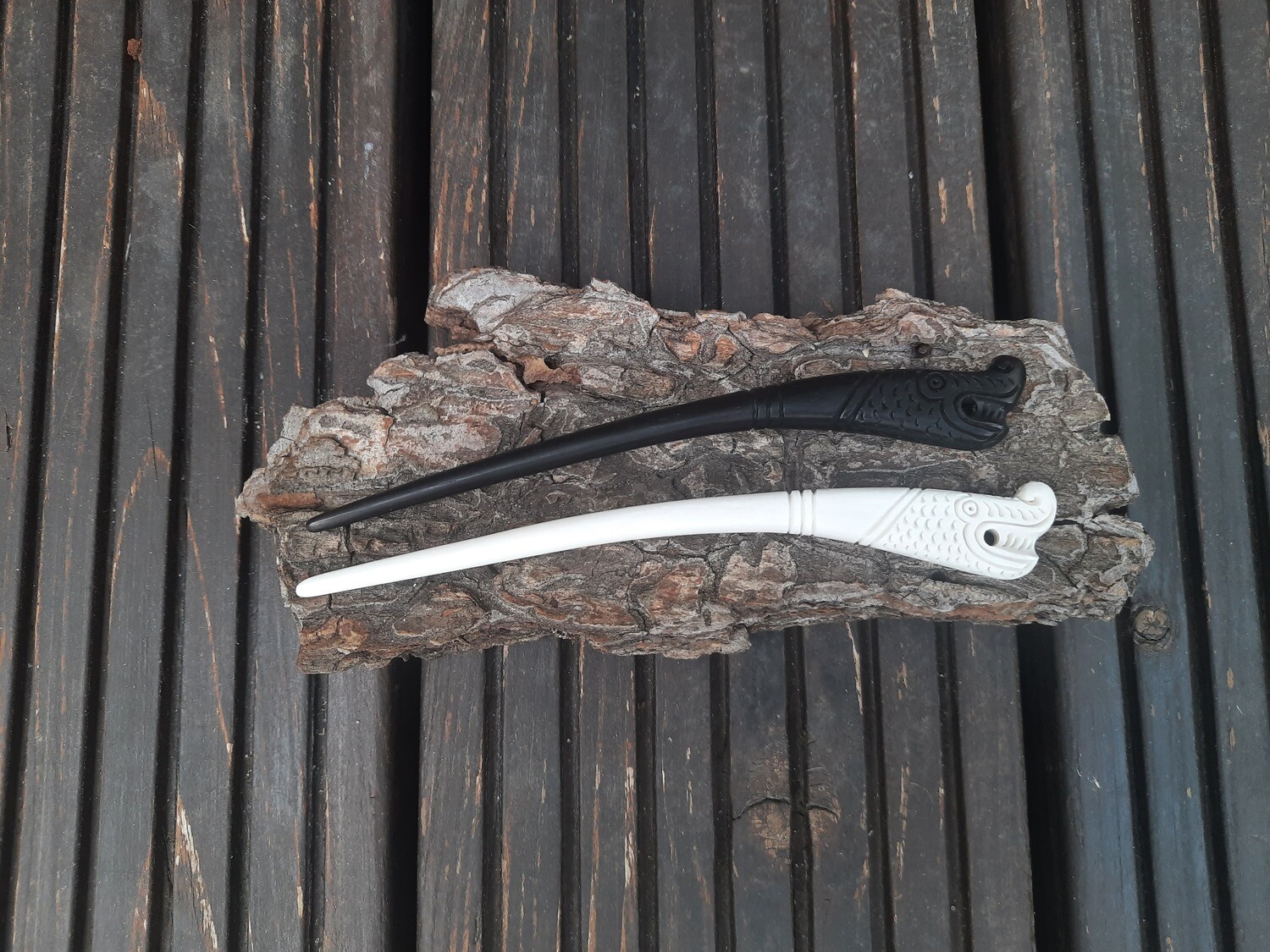Shieldmaiden Bone Hair Pins with Norse Dragon, Handmade (Price for Pair)
Viking Shieldmaiden Hairpin - Hand-Carved from Natural Cattle Bone and Hardwood
Embrace the spirit of the Shieldmaiden with our exquisite hand-carved hairpins, crafted from white natural cattle bone and hardwood in a Nordic Dragon Viking Art style. Each piece is a unique carving, meticulously crafted by hand, and offers powerful protection from evil forces.
These hairpins, measuring approximately 13 cm in length, are not only stylish accessories but also significant symbols of strength and resilience, perfectly suited for Shieldmaidens of any age.
Available in two stunning colors - Dark/Black and Natural White - these hairpins complement each other beautifully and can be worn together for a striking look.
In medieval Scandinavia, hairpins were more than just functional accessories; they were symbols of fashion, status, and belief:
- Fashion and Style: Intricately designed hairpins were used to adorn and style hair, reflecting the fashion trends of the time.
- Social Status and Wealth: The material and complexity of hairpins often indicated the wearer's social status, with nobility favoring precious metals and elaborate designs.
- Functional Use: Hairpins served a practical purpose by keeping hair in place and supporting elaborate hairstyles.
- Symbolism and Beliefs: Hairpins were believed to possess protective qualities and were sometimes buried with the deceased as grave goods.
- Rituals and Ceremonies: Hairpins played a significant role in weddings, religious ceremonies, and other rituals, symbolizing purity and femininity.
Our Shieldmaiden hairpins are inspired by Norse art motifs and archaeological finds, making them unique pieces that resonate with Viking heritage and tradition.
Explore our collection of Viking accessories and embrace the spirit of the Shieldmaiden with these exquisite hairpins.
Tags: handmade gifts for Shieldmaiden, Shieldmaiden hair pin, Norse artefact, Norse totemic animals, Zoomorphic Viking pendant, Borre Viking art style, Norse woodworks, Vikings, Lagertha, Shieldmaiden, Viking jewelry, Ragnar, Bjorn, Kattegat, Viking amulet, Norse art, Antique collection replica, Medieval woodcarvings, Valkyrie netsuke, pagan art from Europe.
- Recommendations for wear and storage: Avoid protracted heat (saunas, baths, direct sunlight), as well as contact with water and household chemicals.

